Editor's note: CGTN's "Along Tibet's New Railway" series spotlights nine main stations on the Lhasa-Nyingchi Railway line – Gonggar, Zhanang, Shannan, Sangri, Gyaca, Nang County, Mainling, Gangga, and Nyingchi, delving into the diverse natural resources and rich cultural backgrounds of south Tibet's cities and counties.
The 435-kilometer-long railway shortens the journey between Lhasa and Nyingchi by 3.5 hours. From Tibet's first palace, Yumbulagang Palace, to the world's deepest canyon, Yarlung Tsangpo Grand Canyon, tourists can enjoy the areas' unique cultural and natural landscapes.
Following the first episode featuring the cradles of Tibetan culture, the second episode will introduce three unique counties unbeknown to many in Shannan and Nyingchi: Sangri, Gyaca, and Nang County, exploring the majestic yet mysterious sceneries of the hinterland of the Qinghai-Tibet Plateau.
Spanning more than 2,600 square kilometers, Sangri County is one of the 11 counties under the jurisdiction of Shannan, a prefecture-level city in southeastern Tibet, with over 18,000 inhabitants.
Situated on the southern foothills of the Gangdise Mountains and in the middle reaches of the Yarlung Tsangpo River valley, Sangri, which means "Copper Mountain" in Tibetan, has abundant solar energy and water resources, as well as mineral resources including copper, limestone and marble.
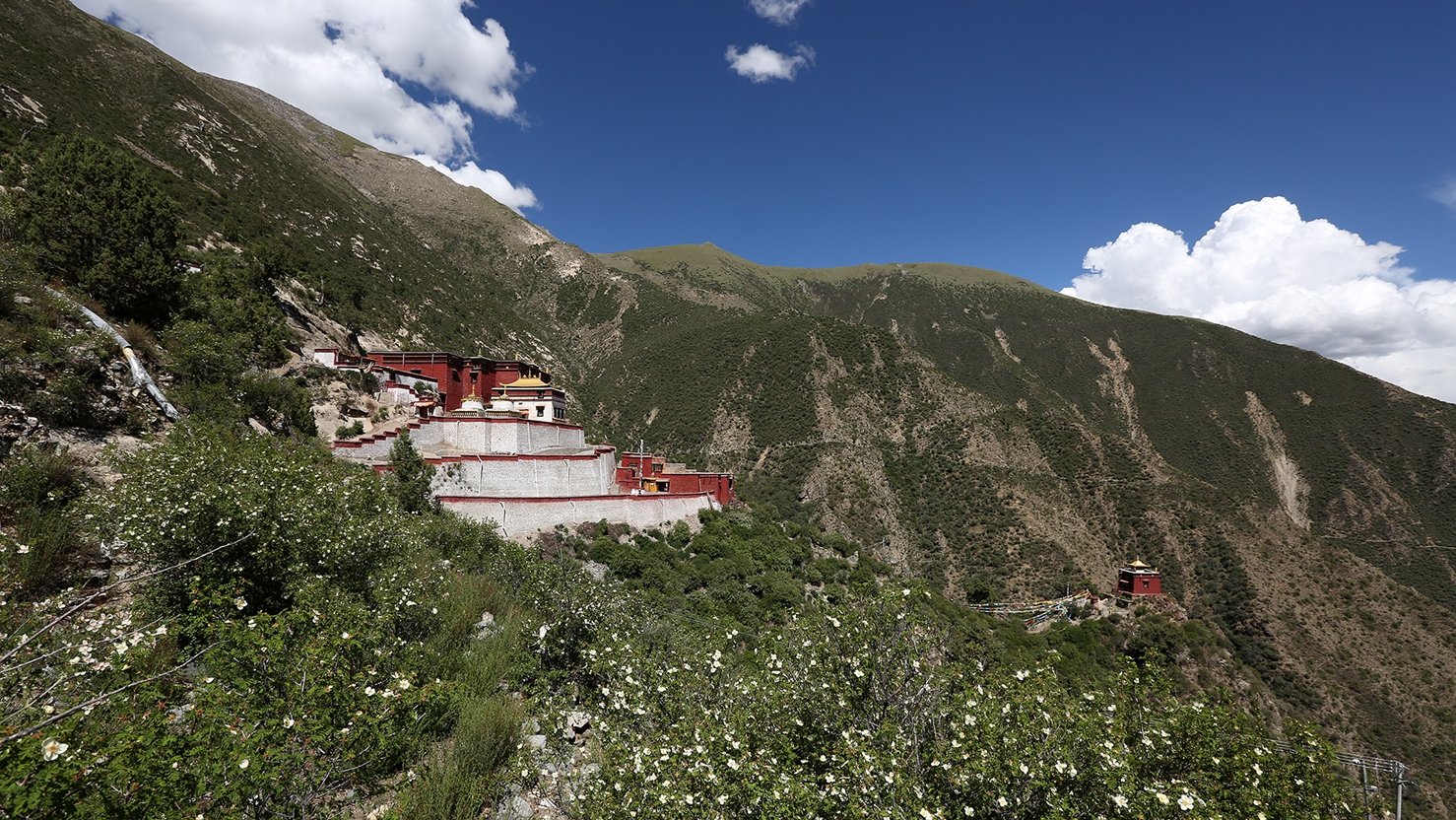
Dansathil Monastery is a magnificent ancient building complex covering upwards of 300,000 square meters on a hillside in Sangri, Shannan City, Tibet Autonomous Region, southwest China. /sangri.gov.cn
Dansathil Monastery is a magnificent ancient building complex covering upwards of 300,000 square meters on a hillside in Sangri, Shannan City, Tibet Autonomous Region, southwest China. /sangri.gov.cn
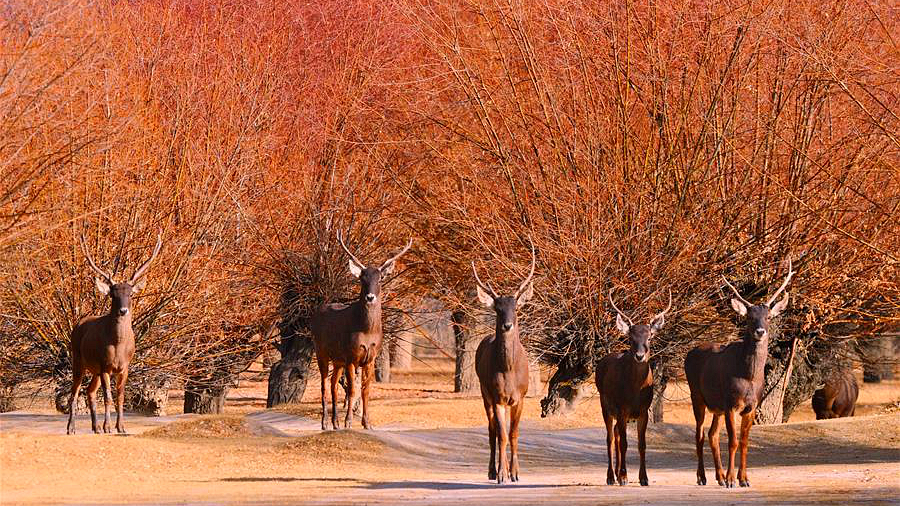
Red deer are seen in a forest of the nature reserve in Shannan, Tibet, China. /Xinhua
Red deer are seen in a forest of the nature reserve in Shannan, Tibet, China. /Xinhua
The county is home to numerous historical sites and monuments, including Dansathil Monastery, a magnificent ancient building complex covering upwards of 300,000 square meters on a hillside, and Olga Cholung Monastery, as well as various precious wildlife species such as Tibetan red deer and blue sheep.
Among the county's best natural landmarks, there are Sangri Red Deer Nature Reserve, in which more than 5,100 red deer are living, and the Dagu Canyon Scenic Area, where travelers can see the Yajiang Grand Canyon – the second largest canyon on the plateau – with a sharp turn of the mother river of the Tibetan people, Yarlung Tsangbo.
Gyaca, also a county in Shannan, means "the salt of the Han ethnic group" in Tibetan and covers a total area of 4,646 square kilometers, with a population of around 21,600. The county observes numerous notable landmarks and historical religious sites, such as the renowned Daklha Gampo Monastery and the Chokhorgyal Monastery, a 4,000-square-meter Buddhist temple complex.
Established in 1121, the Daklha Gampo Monastery sits atop a mountain range of the same name, about 4,150 meters above sea level. Embraced by dense jungle and sea of clouds, the 900-year-old monastery was founded by Sonam Rinchen (1079-1153), a much-loved Tibetan Buddhist master.
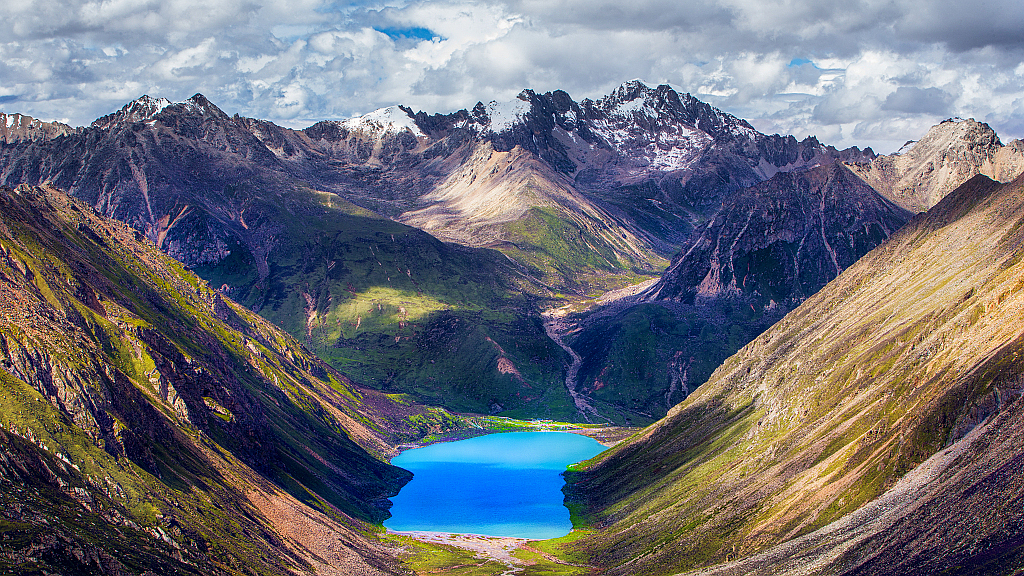
Lhamoi Lhatso Lake is like a mirror engraved in the mountainous hinterland in Gyaca, Shannan, Tibet, China. /CFP
Lhamoi Lhatso Lake is like a mirror engraved in the mountainous hinterland in Gyaca, Shannan, Tibet, China. /CFP
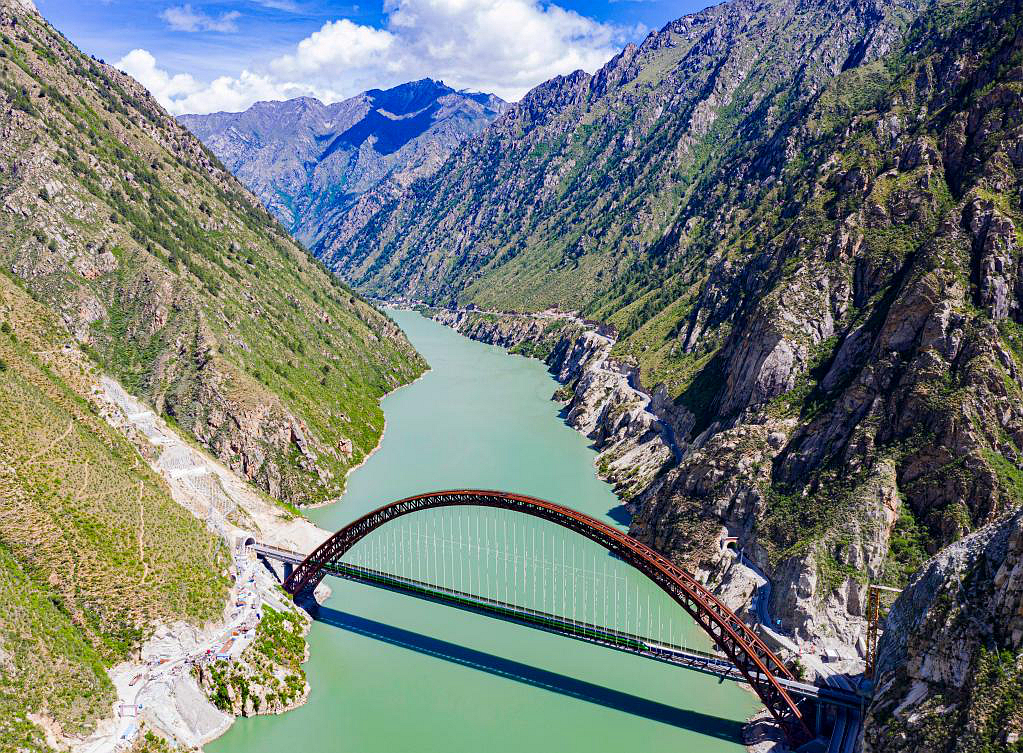
A Fuxing bullet train runs on the Zangmu Railway Bridge during trial operation in Shannan, Tibet, China, June 17, 2021. /Xinhua
A Fuxing bullet train runs on the Zangmu Railway Bridge during trial operation in Shannan, Tibet, China, June 17, 2021. /Xinhua
With about 160 lakes across the county, Gyaca is home to Lhamoi Lhatso Lake, also known as the "Holy Lake of the Goddess." Spanning only about one square kilometer and enclosed by snowy peaks, the small yet sacred lake is like a mirror engraved in the mountainous hinterland, attracting a number of pilgrims and monks every year.
In addition to various historical sites and natural attractions, the county today also boasts new landmarks such as the 525.1-meter-long Zangmu Railway Bridge, which crosses the Yarlung Tsangbo River and is the largest and highest arch bridge of its kind in the world.
Subordinate to Nyingchi City in southeastern Tibet, Nang County is connected to Mainling County to the east, Gyaca County of Shannan City to the west, and India to the south. Spanning about 4,200 square kilometers, with more than 17,640 inhabitants, the county is known for red peppers, walnuts, Tibetan hats and wooden bowls.
Sandwiched between the Himalayas and Mount Nyanchen Thanglha, the county is separated by the Yarlung Tsangpo River into southern and northern parts and has rich natural geological features, including lakes, mountains, valleys and glaciers.
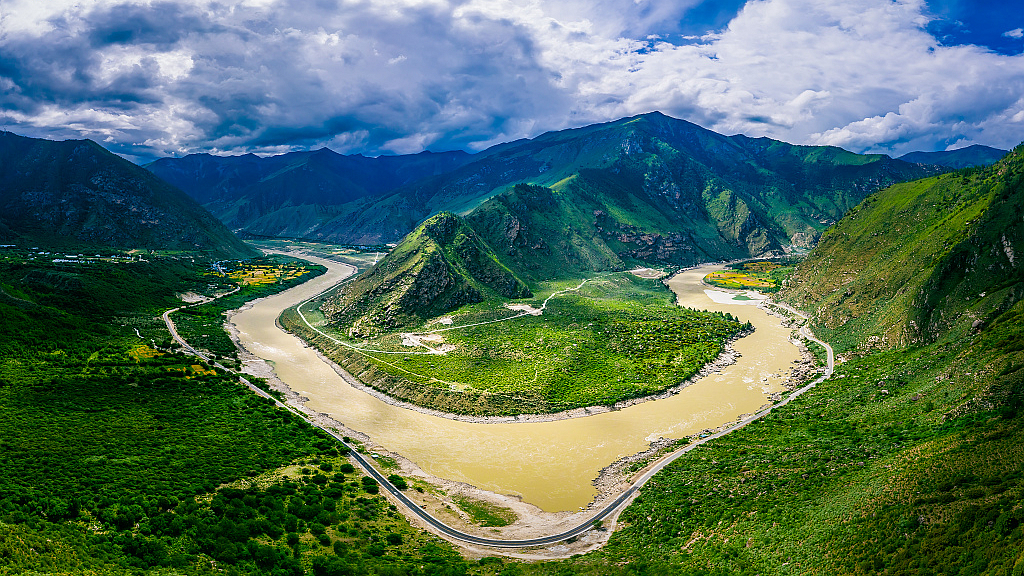
A sharp turn of the Yarlung Tsangpo River is seen in the junction between Gyaca County of Shannan City and Nang County of Nyingchi City, Tibet, China. /CFP
A sharp turn of the Yarlung Tsangpo River is seen in the junction between Gyaca County of Shannan City and Nang County of Nyingchi City, Tibet, China. /CFP
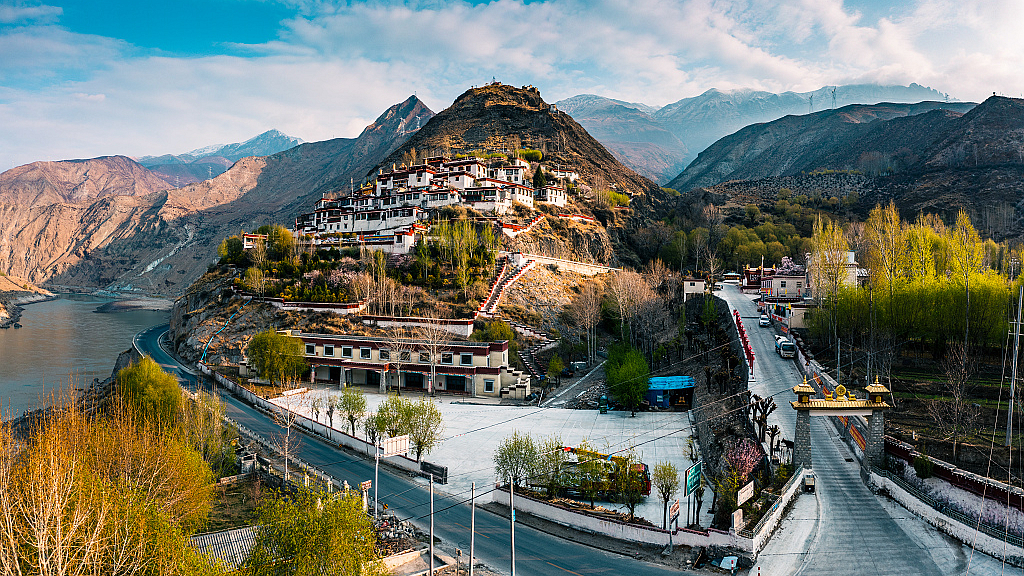
The Parchode Monastery is situated on a hillside in Nang County, Nyingchi, Tibet, China. /CFP
The Parchode Monastery is situated on a hillside in Nang County, Nyingchi, Tibet, China. /CFP
Some of the most stunning sceneries include Tsari Sarpa Mountain, also known as Mount Tsari, which is considered sacred for Tibetans to make the pilgrimage, or "walking the kora," as well as Latok Tsang Lake, surrounded by high-elevation forests and rich biodiversity.
The historical county is also home to Parchode Monastery, one of the largest monasteries in Nyingchi, covering an area of more than 2,000 square meters, as well as Lieshan Ancient Tombs, a magnificent ancient tomb cluster of over 180 preserved tombs stretching for several kilometers. The tomb complex reflects the funeral system and tomb level in Tibet with more than 100 years of history.
(Cover image and graphics designed by Liu Shaozhen and Yin Yating)

